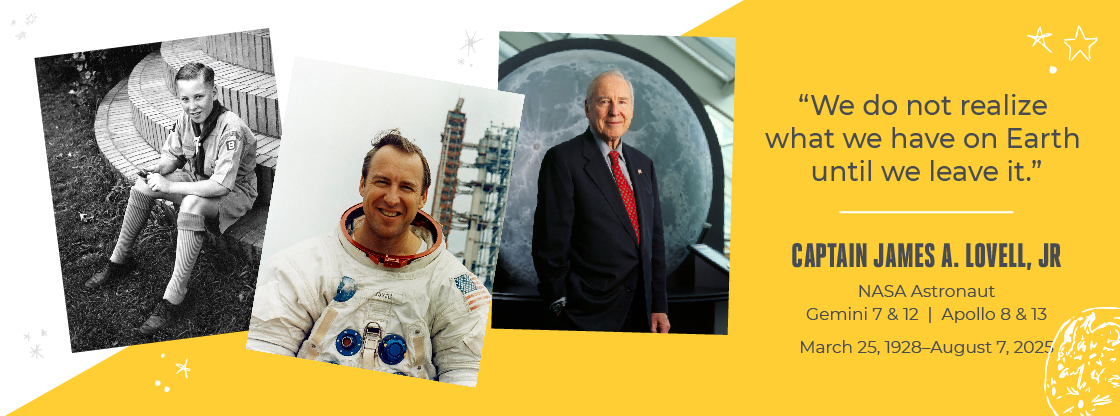The Adler Planetarium Mourns the Loss of Captain James A. Lovell Jr.
Header Image: Captain James A. Lovell, Jr. Official Portrait Taken at the Adler Planetarium in 2018.
The Adler Planetarium mourns the loss of American hero, former NASA Astronaut, and Adler Life-Trustee Captain James A. Lovell Jr. who died yesterday, August 7, 2025, at the age of 97.
Captain Lovell, a part of the Adler family for many years, was instrumental in making the Adler a community engagement center for space science. In 2007, Lovell became an Adler Trustee and co-chaired the most successful fundraising campaign in Adler’s history. The campaign raised funds for new exhibitions, theater experiences, education, and research. Captain Lovell worked tirelessly as an advocate for public science education and was a very dear friend of the Adler. He will be greatly missed.
The following is a statement from Interim Adler Planetarium President & CEO Audris Wong:
“On behalf of the Adler Planetarium, I express our heartfelt condolences to the entire Lovell family. A true American hero, James A. Lovell Jr.’s life story demonstrates perseverance, commitment, and hard work. For multiple decades, the Adler has been honored to work closely with Jim. In addition to being a Trustee, he generously contributed his space artifacts and passionately advocated for improving science engagement. Jim’s personal stories of space exploration have inspired millions of visitors. Captain Lovell was a naval hero, space pioneer, and successful business leader, but it is his role as a champion for science education and his commitment to motivating the next generation of explorers that will be his enduring legacy at the Adler Planetarium.”
A Lifelong Connection
In the early 1940s, when Captain Lovell was a young boy, he found himself wandering the halls of the Adler Planetarium looking for parts for his new hobby of rocketry. Instead, what he found was a deep inspiration for the concepts of astronomy and space exploration. This passion led him to an extraordinary career with NASA as one of the first astronauts of the early crewed-space flights of Gemini 7, Gemini 12, Apollo 8, and the fateful Apollo 13.
In 2005, he generously donated many of his personal effects from his storied career to the Adler’s collection, enabling guests a unique glimpse into the lives of those that took America’s first steps into space, which Jim was quick to point out, included the talented colleagues and supportive family members who were instrumental to every success. You can find these personal effects in our Mission Moon exhibit, telling the story of the space race through Lovell’s eyes.
In honor of Captain Lovell’s 90th birthday in 2018, the Adler honored him through a Letters to Lovell campaign. People young and old throughout the world wrote to express how Captain Lovell inspired them. The heartwarming letters were featured in the Mission Moon gallery and presented to him when he was honored with a lifetime achievement award at the annual Celestial Ball gala.
In celebration of Captain Lovell’s life, the Adler is relaunching Letters to Lovell. We invite guests to share how he has inspired them by visiting our Mission Moon gallery and writing him a letter, or submitting one to [email protected]. All letters will be shared with Jim’s family to cherish forever.
An Eye To The Future: The James A. Lovell Legacy Fund
In October of 2024, the Adler launched the James A. Lovell Legacy Fund. The new endowment, spearheaded by Captain Lovell and his family, will help the Adler support infrastructure needs, and continue to inspire the next generation of explorers into the future. More than $3.4 million has been committed to seed the fund.
At the Adler, we want each person who walks through the doors of our iconic art-deco building to find what Captain Lovell found here: a universe, a community, and an irresistible call to explore whatever captures their imagination. Everyone should know the Adler as a safe place to try and fail and try again, an approach Jim Lovell successfully demonstrated throughout his life. We’ll all face unexpected challenges and even failures; it’s what we make of these moments—how we readjust, learn, and grow that matters. The Lovell Legacy Fund will help the Adler continue to provide these unexpected, inspirational moments.
Learn more about the Lovell Legacy Fund, or make a donation.
More About Captain James A. Lovell, Jr.
Captain Lovell is best known for his courageous role as commander of the Apollo 13 mission, which suffered a critical failure en route to the Moon, but was brought back safely to Earth by efforts of the crew and mission control. He also piloted Apollo 8, the first Apollo mission to enter lunar orbit. He is one of only 24 people to have flown to the Moon, and the only one to have flown there twice without making a landing.
In perhaps his proudest role, he was married to his high school sweetheart, Marilyn Lillie Lovell, for 71 years before she preceded him in death. Together, they had four children, eleven grandchildren, and seven great grand-children. Captain Lovell attended the University of Wisconsin-Madison, graduated from the United States Naval Academy, the University of Southern California Aviation Safety School, and Harvard Business School’s Advanced Management Program. He is a recipient of the Congressional Space Medal of Honor and the Presidential Medal of Freedom.
On November 20, 2019, Adler Planetarium staff interviewed Captain Lovell about his memories and thoughts looking back at his exciting career. Hear his stories.
The Adler Planetarium Appoints Elizabeth Babcock as President and Chief Executive Officer
Header image: Headshot of Elizabeth C. Babcock
The Adler Planetarium announced today the appointment of Elizabeth C. Babcock, PhD as its next President and Chief Executive Officer. Babcock’s appointment follows a comprehensive six-month global search led by a committee of Adler’s trustees, made up of prominent business and civic leaders, in partnership with Russell Reynolds Associates. The committee’s recommendation was unanimously approved by the Board of Trustees.
“On behalf of the Board, it is my pleasure to welcome Elizabeth back to Chicago to lead the Adler,” said Nancy Gerrie, Chair of the Board of Trustees. “Elizabeth is a non-profit leader of national distinction, an accomplished fundraiser, and a dedicated scientific educator. We are confident her expertise and vision will profoundly shape the Adler’s future. I look forward to seeing the continued positive impact of the Adler in our community under her leadership.”
Babcock joins the Adler with extensive experience in a wide array of leadership roles. Most recently, she served as the Founding Director of the Smithsonian American Women’s History Museum in Washington D.C., where she laid the groundwork for a landmark multimillion dollar campaign. Prior to her time at the Smithsonian, Babcock was President and CEO of Forever Balboa, the city of San Diego’s private partner stewarding a 1,200-acre urban park. She also held the key senior role at the California Academy of Sciences in San Francisco as the Chief Public Engagement Officer and Roberts-Wilson Dean of Education. There, she directed the Morrison Planetarium and Science Visualization Studio and public-facing programs that reached over 20 million learners worldwide and secured significant philanthropic support for science education. In Chicago, Babcock previously served as Vice President of Education and Library Collections at the Field Museum of Natural History.
“I am honored to join the Adler Planetarium as its next President and CEO,” said Babcock. “This is an extraordinary moment to lead an historic institution, one that inspires us with daily discoveries about the cosmos and the universe we inhabit together. I aim to build upon the Adler’s exceptional record in space science education, community engagement, and collaboration as we prepare to celebrate our centennial in 2030, and beyond.”
Gerrie continued, “We are also deeply grateful to Audris Wong, who has provided steady leadership as Interim CEO over the past several months. Audris will return to her role as Vice President of Finance and Administration following Elizabeth’s arrival on October 6th. With such a strong leadership team and dedicated staff, the Adler is well-prepared for the exciting years ahead.”
Support America’s First Planetarium
Located on Chicago’s lakeshore, the museum typically hosts more than half a million visitors each year and reaches millions more through youth STEAM programs, neighborhood skywatching events, people-powered research, and other outreach efforts. Today, the Adler is bringing our unique approach—scientific exploration rooted in community and connection—to guests from around the world who can enjoy the digital Adler from their own homes, libraries, schools or offices.
Donate today and help us continue to bring educational space programming to everyone, everywhere as we embark on this new chapter!
Summer Reading List: The Best Space Science And Astronomy Books
Header Image: Assigned Summer Reading graphic displaying books.
As adults, we rarely get assigned summer reading. Which, honestly…is a SHAME. The thrill of earning prizes like a personal pan Pizza Hut pizza or holographic stickers from the local public library for completing your summer reading was unmatched.
For our forever learners, we wanted to make this blog extra special for you.
Summer Reading List: Best Astronomy Books
Usually, books are paired best with a cup of tea or coffee, but these suggestions pair best with binoculars and/or a clear night sky. Preferably both!
We asked our staff to hand-pick a few of their personal favorite space-themed books. We hope you find one of your new favorite reads below.
A Book For People Who Love Stargazing
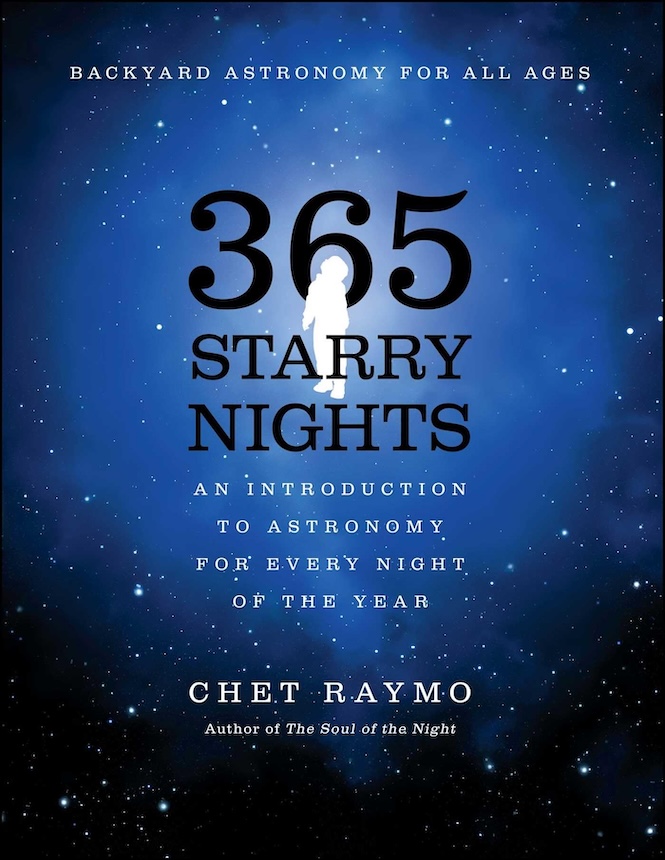
365 Starry Nights by Chet Raymo
These 365 illustrated essays will show you how astronomers see the stars. You’ll learn how to use your own observations to calculate a star’s age, brightness, and distance from Earth.
“As a total astronomy beginner, this book has been super helpful to build my familiarity with the night sky,” Teen Programs Manager, Lauren Wisbrock, states.
Assigned by the Adler’s Director of Public Observing, Michelle Nichols.
A Book For People Who Are Obsessed With Space Exploration
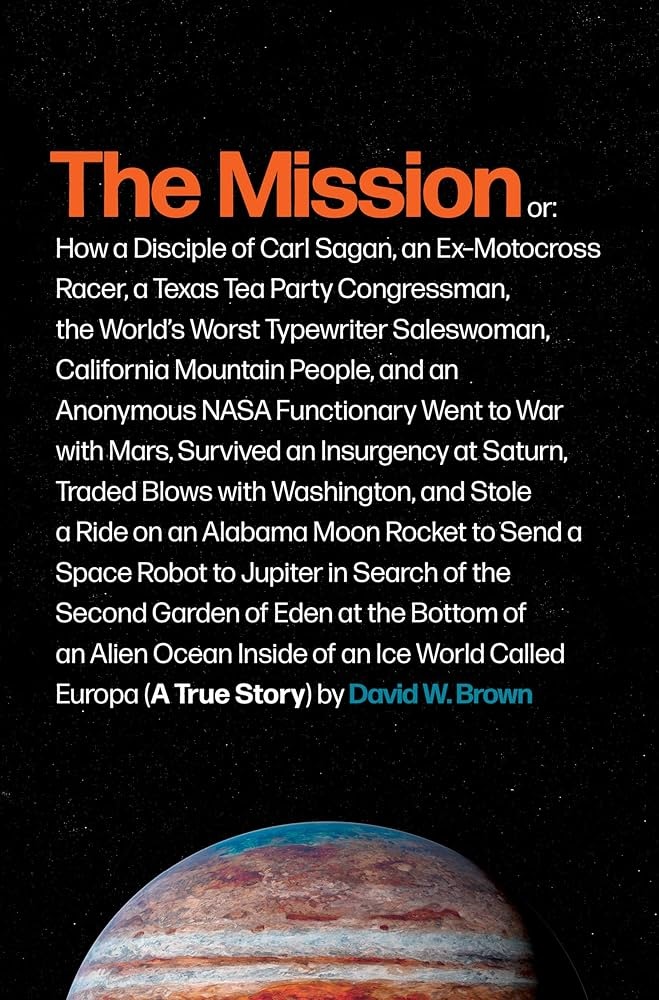
The Mission: A True Story by David W. Brown
A never-before-told story of modern space exploration, and the inner lives of scientists who study the solar system’s mysterious outer planets.
“A great look at the behind-the-scenes of what it actually takes to get a space mission off the ground,” Mike Smail, said.
Assigned by Senior Director of Theaters & Visualization, Mike Smail.
A Book For People Who Can’t Wait To Colonize Mars
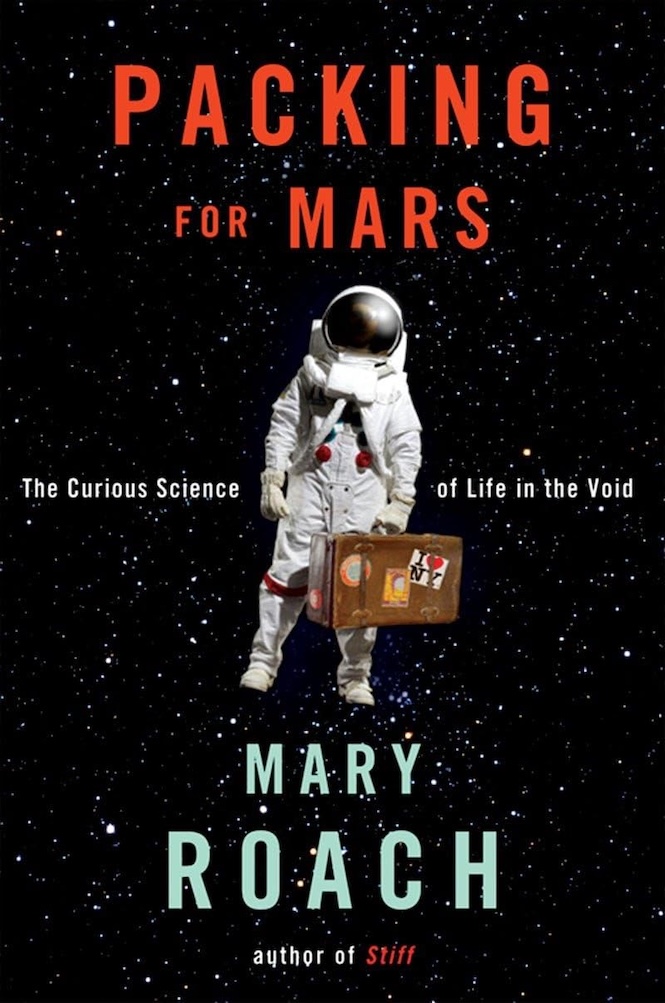
Packing For Mars by Mary Roach
Are you ready to unpack the scientific side of space travel, even the gross bodily functions like going to the bathroom in space? Hold on to your seats (because there’s no gravity in space).
“Packing For Mars shines a light on the craziness of space travel, such as how space affects human bodily functions and how the mental and physical aspects of spaceflight are tested,” Dr. Mike Zevin, states.
Assigned by Adler Astronomer, Dr. Michael Zevin.
A Book For People Who Are Interested In The History Of Astronomy and Astrology
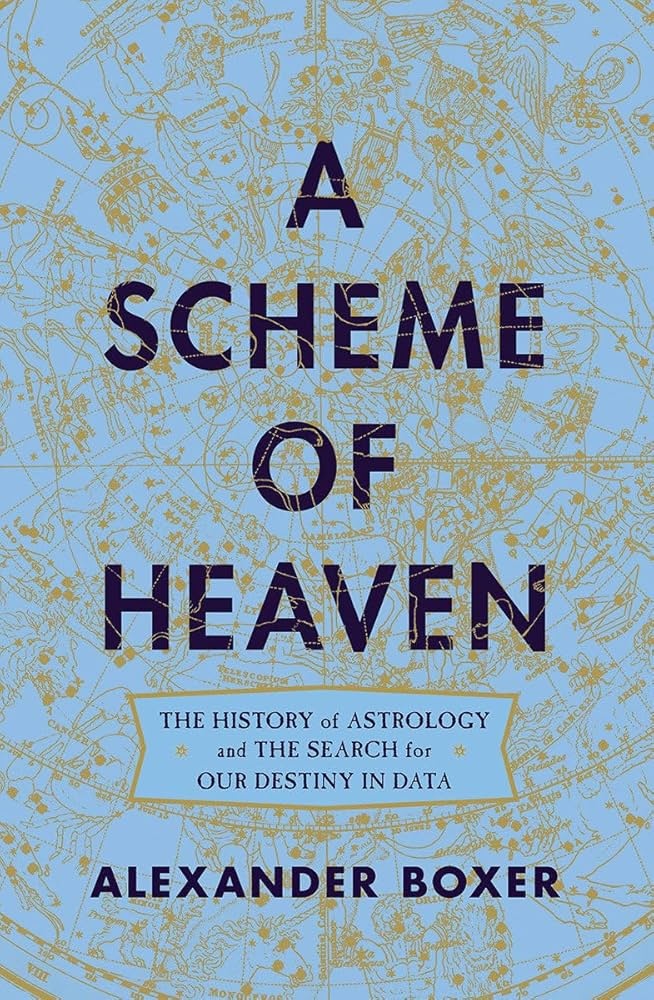
A Scheme Of Heaven: The History of Astrology And The Search For Our Destiny In Data by Alexander Boxer
Perfect for any history or data science nerd, dive into the surprising history and science of astrology, civilization’s first system of algorithms, from Babylon to the present day. Horoscopes were once a cutting-edge scientific tool, and astrology was a vast, technological project—spanning continents and centuries—that foreshadowed our data-driven world today.
Assigned by the Senior Manager of Facilitations, Ani Schmidt.
A Book For People Interested In Light Pollution And Environmental Justice

The Darkness Manifesto by Johan Eklöf
A timely and captivating look at the hidden impact of light pollution. Darkness may not be as scary as we think, leaving you with an understanding of the impact of light pollution on wildlife with an ecological and evolutionary perspective.
“The chapters are super quick, focused, and digestible,” said Lauren Wisbrock.
Assigned by Adler’s Teen Program Manager, Lauren Wisbrock.
A Book For People Who Are Interested in Mind-Blowing Astrophysics
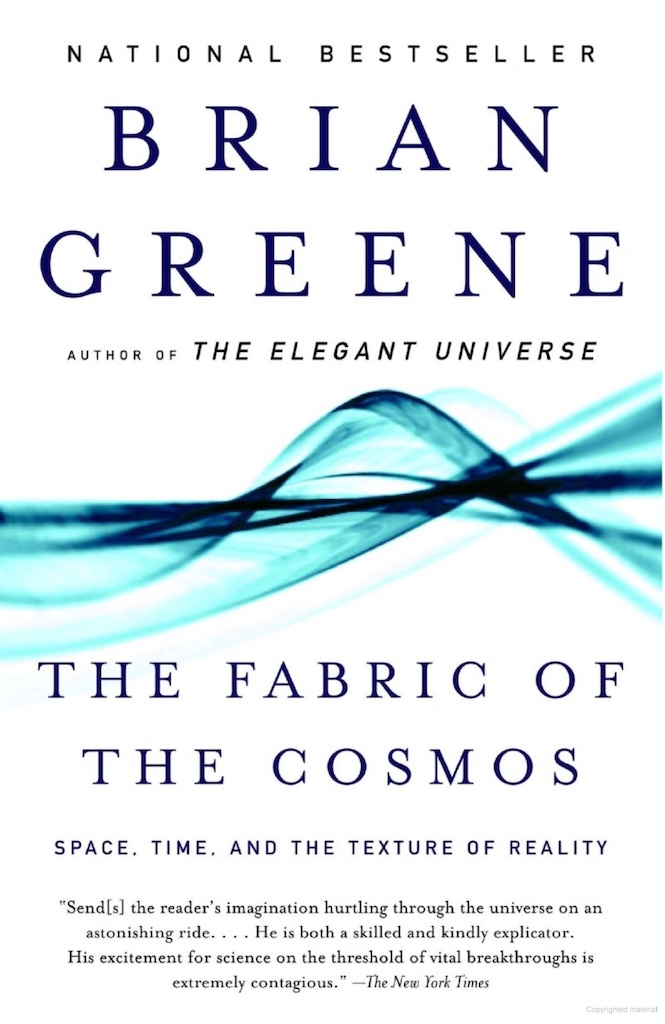
The Fabric Of The Cosmos by Brian Greene
Greene breaks down the brain-melting science of space and time for general audiences. If you’ve heard of relativity but you don’t actually know what it is, this book is for you.
“I read this book when I was in graduate school for creative writing and spent the next several months screaming in everyone’s face about how time is an illusion,” said Aubrey Henretty.
Assigned by the Adler’s Manager of Science Content and Communication, Aubrey Henretty.
A Book For People Who Love Celebrating Anniversaries
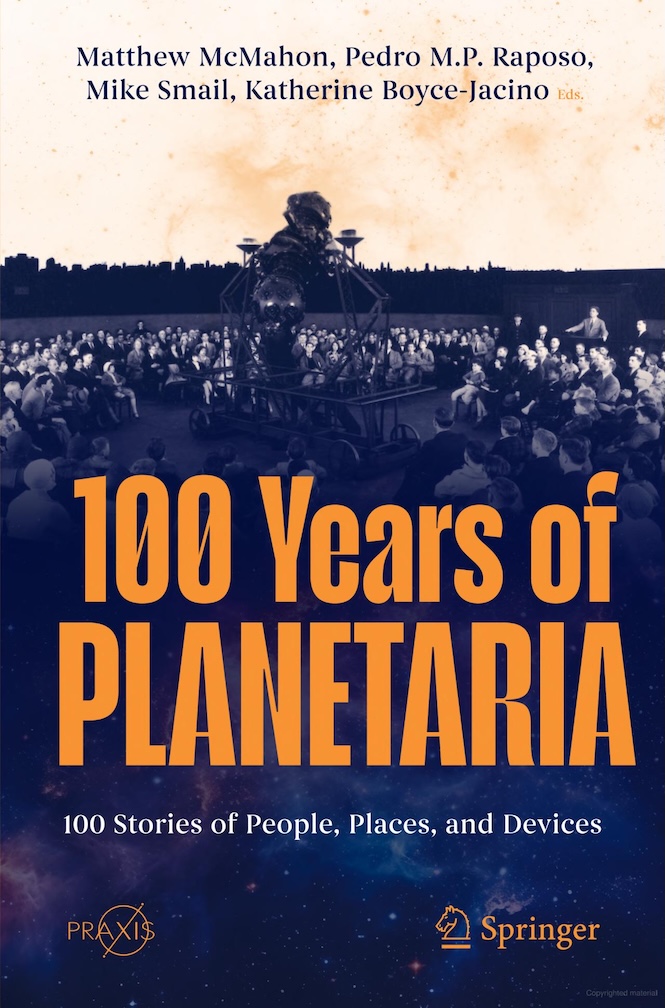
100 Years of Planetaria: 100 Stories of People, Places, and Devices
It’s been 100 years since the first planetarium captured the public’s imagination! To celebrate, this book shares 100 stories, each told by an expert, scientist, historian, or planetarium professional, some of whom may be familiar to readers as former and current staff of the Adler Planetarium.
“The planetarium is the original immersive environment. Before Sphere, before Immersive Van Gogh, before virtual reality there were planetariums. Created 100 years ago to allow people to visualize the motions of the celestial bodies in the sky, the planetarium has always been a physically and emotionally transportive experience,” Mike Smail, states.
Assigned by Senior Director of Marketing, Erin Wilson.
Never Run Out of Space
As your spaced-out summer transitions into a fall-out fall, keep up with our cosmic shenanigans at the Adler. Get your fill of mildly-educational and highly-entertaining space hijinks straight to your inbox, all year long.
In our bi-weekly newsletter, Space From Home, we give you the rundown on breaking space news, share fun things to click on, and keep you up-to-date on all things Adler.
Adler Skywatch: August 2025
Header Image: A long-exposure image of shooting stars from the Perseids meteor shower leaving long white streaks across the dark sky, with the Milky Way galaxy visible between them.
A major annual meteor shower peaks, and the sky’s two brightest planets have a close encounter this month. Here’s what you can see in the sky in August, 2025!
The Perseids Meteor Shower
The Perseids—the most reliable summertime meteor shower—peak this month! Named for the constellation Perseus, the Hero, the meteors in this shower all trace back to its radiant point in Perseus.
Like many other annual meteor showers, the Perseids are caused by debris left in space by a comet and can appear anywhere in the sky. There are a few other annual showers that may display as many, or more, meteors than the Perseids, but those take place in wintertime.
How To See The Perseids Meteor Shower
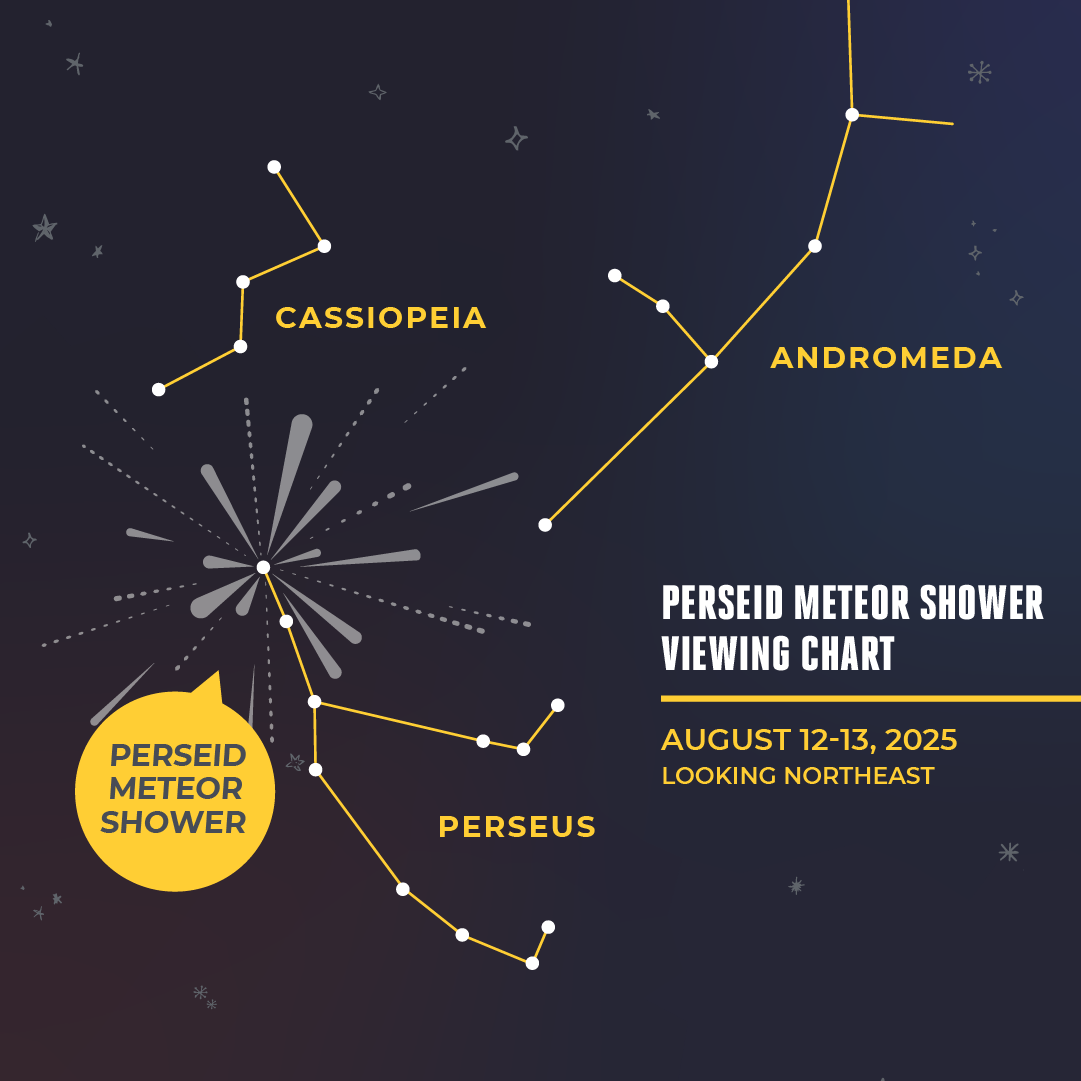
Technically the Perseids meteor shower became active in mid-July; but this year, its predicted peak starts the evening of August 12 through the early-morning darkness of August 13.
Unfortunately, the waning-gibbous Moon rises that night shortly before 10:00 pm, so its glare will block fainter Perseid meteors from view. At the shower’s peak, around 50–75 Perseid meteors per hour are expected under very dark, very clear skies—which will be hard to achieve when the Moon is up. Under moonlit and light-polluted skies, expect to see far fewer than that, maybe only a dozen or so. Face east, look up, and settle in for at least 15–20 minutes to give your eyes a chance to adjust to the darkness. Watch for sporadic quick streaks of light—those are meteors!
Tips For Seeing The Perseids In 2025
The shower is active through late in the month, so one viewing suggestion for seeing more is to look for meteors a day or two (or three!) after the peak, when the Moon rises later. If you go out to look before the Moon rises, you have a better chance of seeing more, and fainter, meteors. There will be fewer meteors, overall, past the peak date, but the few hours of darker skies might help you see some.
Another technique to spot the Perseids is to put the Moon at your back—or behind a tree or building—to help minimize its bright glare.
Planet-Spotting In August, 2025
Venus and Jupiter are shining bright with a few close conjunctions throughout the month. Saturn will be easily spotted in the early-evening, with Mars and Mercury hiding not too far from the Sun setting and rising Sun.
Venus And Jupiter Conjunctions
The brilliant planet Venus (at almost minus-4 magnitude) and the slightly less-bright planet Jupiter (at almost minus-2 magnitude) appear near each other during morning twilight this month. They start the month roughly ten degrees away from each other, low in the east-northeast skies.
You’ll spot Venus first, since it’s practically impossible to miss in a clear dark sky. Venus rises at about 3:00 am for most of the month. Jupiter starts the month rising around 3:30 am, but rises a little earlier each morning.
From August 1 through August 11, Venus appears above Jupiter in the sky; but by August 12, Jupiter appears slightly above Venus. This morning, the two planets appear in a close conjunction—less than one degree apart! After August 12, Jupiter moves roughly a degree higher than Venus each morning, so that by month’s end, the two planets are nearly 20 degrees apart.
The morning of August 20, a very slender waning crescent Moon appears between Venus and Pollux, the brightest star in the constellation Gemini.
Where Is Mercury This Month?
At around zero magnitude this month, Mercury is not as eye-catching as either Venus or Jupiter, but it still is quite bright.
The morning of August 15, Mercury appears far enough above the rising Sun to be visible. Look for it about 40 minutes before sunrise, less than ten degrees above the east-northeast horizon.
On August 20, Mercury starts to sink closer to the horizon each day. The morning of August 21, you may be able to make out a sliver of a waning crescent Moon—only two days before a new Moon—just above Mercury. After August 22, Mercury appears barely 14 degrees away from the Sun’s edge and thus will be difficult, if not impossible, to see.
How To See Saturn And Mars
Saturn will be readily visible in the evening sky this August. It rises in the east around 10:30 pm at the start of the month, and around 8:30 pm by month’s end. It’s slightly brighter than first-magnitude all month long, and is in the sky most of the night. Saturn reaches roughly 40 degrees high in the south at its highest, between 2:30 am–4:00 am and fades in the southwest as dawn brightens the sky.
This month, the planet Mars is dimmer than 1.5 magnitude. It sets not quite two hours after the Sun, and is very low in the west-southwest once the Sun does set; so it may be hard to see. Late in the month, Mars very slowly begins to brighten again, but it spends the next several months too close to the Sun for ready visibility.
Moon Phases In August, 2025
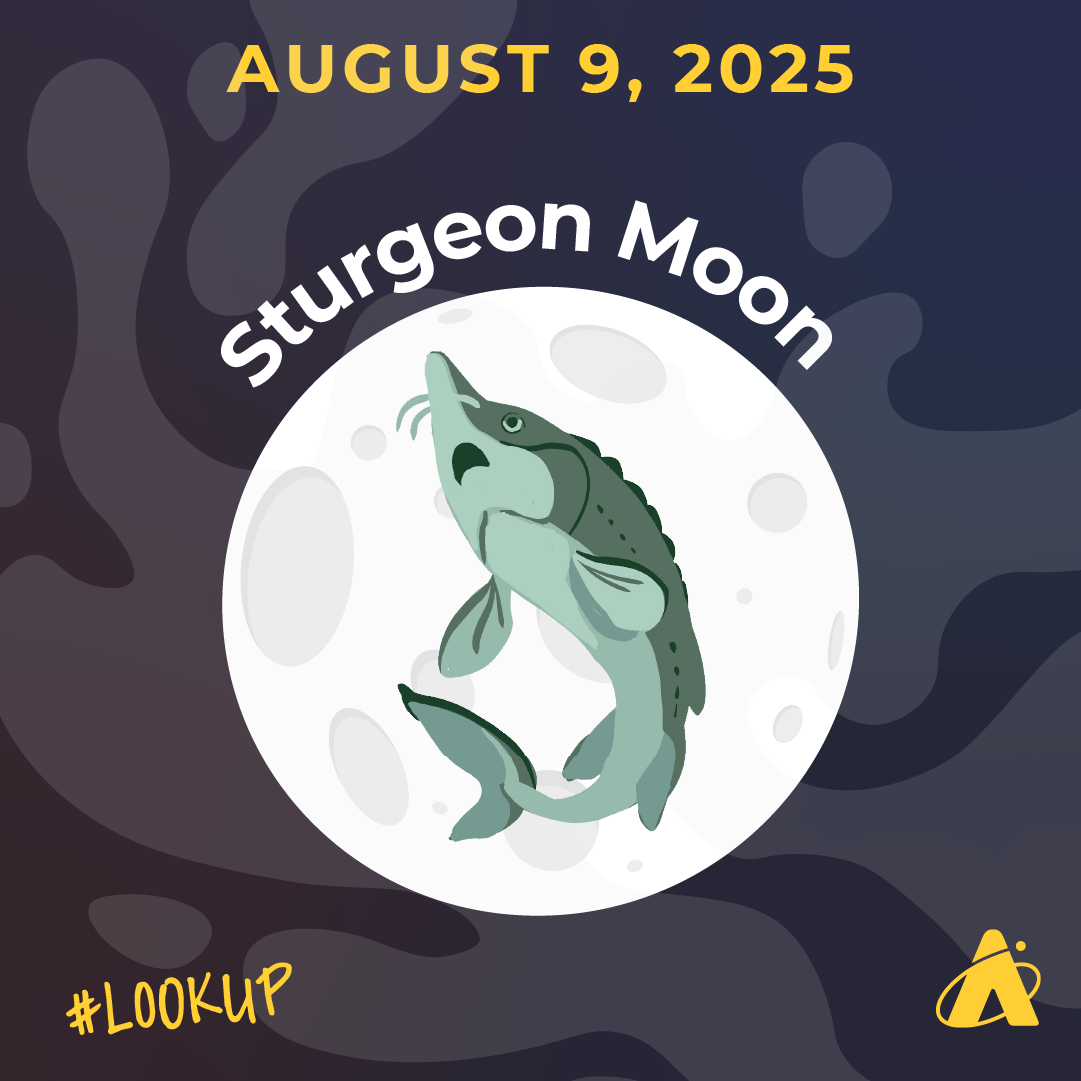
First Quarter Moon: August 1
Full Moon: August 9
Last Quarter Moon: August 16
New Moon: August 23
First Quarter Moon: August 31
Please note: these descriptions are for the Chicago area, using Central time.
Subscribe To Skywatch Wednesday This August
Tour the sky with the Adler Planetarium’s Theaters Manager, Nick, in Skywatch Wednesday. Nick uses cutting edge visualizations, NASA images, and astrophotography to show you what you can see in the night sky throughout the year.
Check out Nick’s latest episode, learn how to see the summer triangle and the constellations that make it up. Plus, see zodiac constellations, Scorpius and Sagittarius, along with several Moon and planet conjunctions, the Perseid meteor shower, and even the Milky Way this summer!
Learn From Our Astronomy Educators
Watch recaps of Sky Observers Hangout livestreams this August! Learn how to observe upcoming cosmic happenings, enhance your astrophotography skills, and see celestial objects through a telescope virtually with our astronomy educators.
In the latest episode, Michelle and Hunter tell you everything you need to know about solar maximum—a period of heightened solar activity that we are currently in! Get a live view of the Sun through our telescopes and learn all about how the Sun’s activity and dynamic weather affects us here on Earth.
Astrophotography 101
Image Caption: Camera attached to telescope shooting a comet in the night sky. Image Credit: Nick Lake
Ring lights are out, but Saturn’s rings are in and ready to be photographed. Before setting your eyepiece on Saturn’s rings, let’s get down to the basics of getting started with astrophotography, including all the equipment you may need to get started.
Telescopes alone can be several hundred dollars. Before investing in one, get an overview of different astrophotography setups, including that cellphone in your backpocket.
With these astrophotography tips for beginners, you should feel confident to start taking your own photos of the skies and what lies beyond them.
Astrophotography For Beginners
There are endless setups for astrophotography. If you are new to astrophotography, one of the easiest ways to start feeling more comfortable and confident is to start by using something that most people have on their person 24/7, a smartphone.
As with any new hobby or profession, when it comes to choosing what equipment is right for you, consider how much time, effort, and money you are willing to invest. These are the largest factors in determining the quality of images you will be able to produce.
Astrophotography Using A Cell Phone
Using your cellphone for astrophotography is absolutely possible, but it can be very unpredictable. For photographing the night sky with a smartphone, it is recommended to take longer exposure photos and also switch your phone’s camera to night mode. This allows for the camera to capture more light, allowing your objects in the sky to appear brighter in the final photo.
If you are trying to capture a wide angle photo of the sky, consider purchasing a tripod to stabilize your phone when taking photos. Many smartphone cameras even allow you to adjust settings such as brightness and exposure.
You can broaden your photography potential, and celestial subjects, by purchasing a telescope and an adapter to take photos with your phone. This will give you a much more close-up view of things like the Moon.
Though, it can be tricky to perfectly align the lens of your smartphone camera with the lens of the eyepiece. This is one reason why some astrophotographers prefer adaptable setups for cameras and telescopes.
Cell Phone Astrophotography Equipment & Tips:
- In your phone’s settings, adjust brightness to night mode and long exposure
- Tripod, for phone stabilization
- Telescope and adapter, allowing you to take much more close-up views with your phone
Related blog: What to See When Observing The Night Sky
Astrophotography Using More Advanced Tools
Telescopes can be a large investment, and we recommend getting involved with local astronomy clubs or even checking out your public library to see if there are opportunities for you to use a telescope before making the investment on your own.
Before you click “purchase now,” another smaller investment you can make before making that large purchase is trying out a pair of 10x binoculars or a small spotting scope. You too can be the modern Galileo with a small spotting scope; with it you may be able to see Saturn’s rings or even some star clusters.
Now, we aren’t going to tell you the best telescope or camera for astrophotography. Why? Because it depends on what you are hoping to capture! Regardless of your astrophotography subject, we can give you a few tips that will help you regardless of your celestial subject.
There is a big difference between visual and photographic needs for astrophotography. The same advice for visual observations is typically not the same for astrophotography. Small format refractors are actually really good at capturing nebulae and galaxies for astrophotography because it isn’t important that they gather enough light right away for your eye to see. What’s needed is high-quality glass so that long exposures look as good as possible.
Lots of incredible astrophotography is done with telescopes that are only 2″ in aperture! A larger reflector can work well, but would also require a bigger mount and tripod to support it and overall reflectors are more finicky and require more careful maintenance in comparison to a refractor.
You may be surprised to find that many of the galaxies and nebulae are shockingly huge in the night sky. The Rosette nebula is around 4 full Moons across the sky. You can’t use a long focal length for a lot of these unless you’re planning to just photograph a small area of the object or doing a mosaic.
Afocal imaging can be done using a smartphone and a telescope, capturing images like the Moon. But if you are ready to take the next step into deep space photography, you need a telescope that will act as the lens of your camera. This usually involves a variety of camera adapters, whether you are shooting with a phone or a professional camera. If you don’t want to mess with adapters, there are combination telescope cameras you can purchase, so you don’t run into any issues with correct adapters.
Astrophotography Cameras
Generally, astophotography professionals and hobbyists use a computerized mount, or at the very least a tracking electric mount. Although it is possible to take great photos with just a camera or telephoto lens and a tripod, this can limit the exposure time.
“DSLR cameras are another piece of technology you may already have at home. You may not realize what great results you can get with just a camera and standard lens for astrophotography,” Manager of Theater Experience at the Adler Planetarium, Nick Lake.
For Milky Way images, though, you are able to use a short lens and dslr on a tripod. A solid mount will allow you to take long exposure images without shaking the camera and telescope, helping you create better astronomical images.
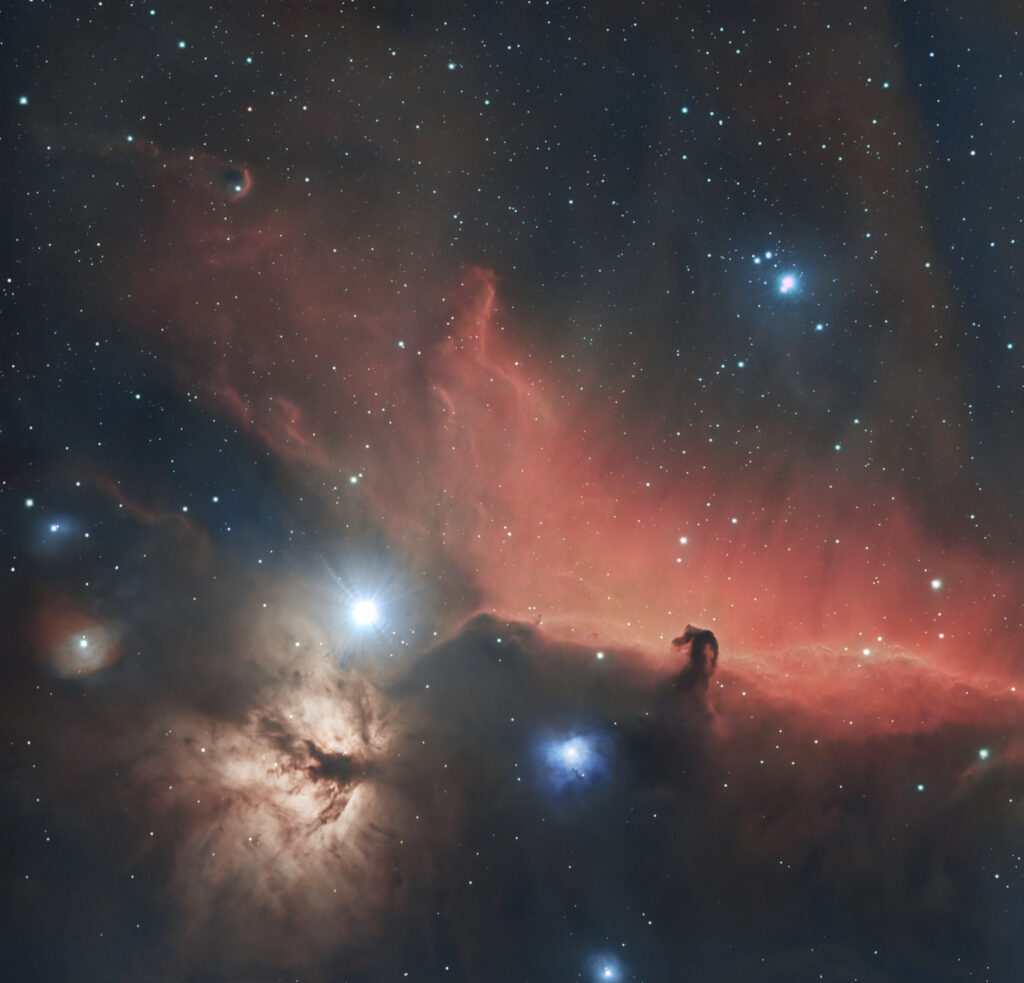
The most important consideration, what do you want to photograph? Each telescope, cameras and filters have their own strengths. Depending on what you want to capture you will want a telescope with a short focal length refactor for shooting celestial happenings like a total solar or lunar eclipse. A long focal length refractor will allow you to photograph planets or clusters.
Related blog: Choosing A Telescope
Telescope Astrophotography Equipment & Tips:
- Although you are rarely using an eyepiece for astrophotography, there are some exceptions for solar or lunar photography. In those cases, same as visual astronomy it is recommended to choose your aperture to match the objects you want to capture. We recommend magnification of about 30-40x per inch of aperture.
- Filters may be useful, especially for our Chicago locals that have more light pollution. An UltraHigh Contract or Light Pollution filter will allow you to see more up in the sky, especially for nebulae.
- If you are not using a computerized mount device or technology like Seestar, starcharts may be needed to help you find WHAT you are looking for in the sky and throughout the year you can find it while looking up.
A Peek Into Astrophotography At The Adler Planetarium
If you have tuned into any of our Sky Observer Hangout episodes, you may be familiar with the camera that we use in the Doane Observatory. Instead of putting in an eyepiece with the telescope, we use a camera. For this camera, the light falls onto a chip, and that is converted to an image. The longer the exposure time is, the more light the chip gathers and the brighter our image will be.
We use a computer program called sharpcap to change the exposure time or electronically bump up the brightness of the generated image, which is called gain.
If you are looking to see more visual examples of our astrophotography set up as well as some more in-depth astrophotography tips, you can watch our Astrophotography Sky Observers Hangout episode.
In the video above, you will see our staff talking about and using the Seestar s50 telescope and a camera all in one, showcased in our Astrophotography episode above, is a smart telescope so you can operate this telescope completely from an app on a mobile device. The Seestar captures objects in the night sky, but it can also capture bright objects like the Sun and Moon, though many other telescopes have the same capabilities and features.
When taking research images at the Adler, we do things a little bit differently than our typical setup. Instead of our full-color camera, we use a monochrome camera. This is done to avoid losing any of the science information embedded in the images, and then we use a filter wheel to take images using different color filters.
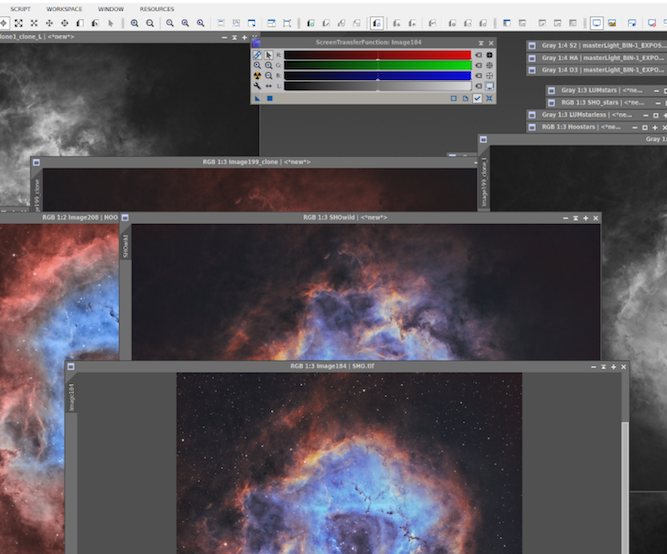
If you are interested in checking out our telescope in-person, the Doane Observatory is open most Wednesdays, depending on weather. You can join our Facebook group ‘Scopes At The Adler to stay updated on opportunities to observe the daytime or nighttime sky from the Telescope Terrace or through our Doane Observatory telescope on Wednesday nights!
For even more sky observing resources, check out our Sky Observing hub! We even have a free downloadable skywatchers companion guidebook you can use to document and sketch out your observations while looking up.
Share Your Astrophotography With Us
We love knowing you were out there connecting with the sky and observing! Use the hashtag #lookup when posting your celestial views and tag the Adler Planetarium, and you may just get featured on our socials.
Follow the Adler Planetarium on Instagram, TikTok, and YouTube or sign up for our emails to get the latest breaking space news, Adler happenings, and event information directly from us!
First Look At Vera C. Rubin Observatory “First Light” Images
Header Image: Trifid and Lagoon Nebulae. Image Credit: NSF–DOE Vera C. Rubin Observatory.
This week, the Adler Planetarium hosted one of the global watch parties for the new first light imagery coming from the Vera C. Rubin Observatory in Chile. Dozens of institutions worldwide hosted the livestream to celebrate the public release of the first images that will be a part of the largest astronomical movie of all time!
We are excited to continue our collaboration and longstanding support with Vera C. Rubin Observatory. The Rubin Observatory is expected to provide data to answer the question of the existence of Planet Nine, the subject of a prominent sky show created and available for viewing at the Adler.
For the next ten years, the Rubin Observatory will use its Legacy Survey of Space and Time (LSST) camera to take detailed images of the southern hemisphere sky, covering the entire sky every few nights and creating an ultra-wide, ultra-high-definition, time-lapse record. This unique movie will bring the night sky to life, yielding a treasure trove of discoveries: asteroids and comets, pulsating stars, and supernova explosions.
What Is First Light?
“First light” is the term used when a new telescope, in this case the Simonyi Survey Telescope, is pointed at the sky to check the performance of the entire system, as the telescope and its instruments are tested to their full potential.
“NSF–DOE Rubin Observatory will capture more information about our Universe than all optical telescopes throughout history combined,” said Brian Stone, performing the duties of the NSF director.
A Close Look At The New “First Light” Images
Released for the first-time earlier this week, the stunning sets of first light images, taken over the past few months, show a variety of the types of objects that this telescope will excel at locating and tracking over time, including the following.
1. The Lagoon And Trifid Nebulae
The Lagoon and Trifid Nebulae are popular summertime telescope targets. The image highlights Rubin’s unique combination of an extremely wide field of view and its ability to take a large number of big images in a very short time. Combining many individual images reveals subtle details in clouds of gas and dust like these nebulae.
This image was created from 678 exposures taken in only 7.2 hours of observing time, and was composed from about two trillion pixels of data in total. No other observatory is capable of producing such a wide-field image so quickly and with this much depth and detail.
2. The Virgo Cluster Of Galaxies

The Virgo cluster of galaxies is the closest large collection of galaxies to our own Milky Way galaxy. Except for a handful of foreground stars located in our own Milky Way galaxy, the rest of this enormous image is composed of galaxies – about 10 million in all. This is a huge number of galaxies, but it is only 0.05% of the roughly 20 billion galaxies that Rubin will image during its 10-year survey. By the end of the survey, we will see this level of galactic detail across the entire southern sky.
3. Imagery Movie Clips Containing Over 2,000 Previously Unknown Asteroids
In the video above, the Rubin Observatory showcases its unique ability to detect large numbers of small and dim objects orbiting the Sun. These first frames show asteroids in our Solar System in motion against the static background of stars and galaxies in the Virgo Cluster.
Of the almost 4,000 asteroids that are in these initial images, 2,104 of them had never been catalogued before, including 7 near-Earth asteroids, 11 Trojan asteroids that share Jupiter’s orbit, and 9 objects orbiting out past distant Neptune. And this is only the very start of what is expected to be an incredible haul of previously-unknown asteroids, comets, and more. These images were taken in just 7 nights. Imagine what we’ll find during the next 10 years!
4. 46 Variable Stars
This video showcases 46 subtly pulsating stars detected in this first set of observations. These stars regularly change in brightness, and these brightness changes can tell us a lot about how these stars work. Objects that change in brightness in our Universe are often some of the most interesting to study, and Rubin will excel at finding and tracking variable stars, supernovae, novae, and more.
These new first light images are now among the options for pre-show looks you can see at the Adler before our Skywatch Live shows. See these brand-new images in an immersive full-dome experience, purchase your tickets today.
Next Steps For The Vera C. Rubin Observatory
After further commissioning work, the observatory is expected to begin science operations later in 2025, and annual science data releases will start in 2026. During the LSST program, the Rubin Observatory will operate automatically, with the 27.5 ft telescope capturing images using the largest camera ever built.
Images will be around 40 seconds long, each encompassing an area of sky equivalent to that of 45 Moons. Dedicated computer facilities will process data in real time and issue worldwide alerts, within minutes, of detected changes.
This unique effort is expected to create a treasure trove of discoveries about asteroids and comets, supernova explosions, and more. In addition to increasing our understanding of known objects, one of the most exciting things will be the likely discovery of brand new types of variable objects that we don’t even know about yet!
Get Involved With First Light Data
Want to explore the skies? You, the public, will be able to help astronomers discover unusual objects with this new data through Adler Zooniverse.
The Zooniverse connects research teams with more than 2.7 million volunteer “citizen scientists” all over the world. Together, our volunteers analyze data sets too tricky for computers to parse and too big for any research team to tackle on its own.
Rubin Observatory has partnered with Adler’s Zooniverse to invite the public to take part in real scientific research using Rubin data. Our first Rubin–Zooniverse projects will launch in the coming weeks—stay tuned!
Subscribe to our emails to be the first to know about upcoming Rubin-Zooniverse projects.
Adler Skywatch: July 2025
Header Image: Mercury, as seen by Messenger in 2011. Image credit: NASA/Johns Hopkins University Applied Physics Laboratory/Carnegie Institution of Washington
A planet that doesn’t usually get seen much gets its day in the Sun this month, along with a chance to spot Mars, Venus, Saturn, and maybe even Jupiter. Here’s what you can see in the sky this month, July 2025!
Evening Planets In July
Your Chance To See Mercury
Mercury is the closest planet to the Sun. As such, it spends most of its time near the Sun in our sky, which means it either gets completely hidden in the Sun’s glare, or that the window of time when it is above the horizon—either before sunrise or after sunset—is very short.
This month, you have a chance to find the usually-hard-to-spot planet during early-evening twilight from July 1 through about July 8, depending on viewing conditions. Start looking for it about 40 to 45 minutes after the Sun sets, because the twilight sky’s brightness makes it hard to see the planet any earlier. Mercury is a little brighter than first magnitude at this time, but it gets dimmer each evening. The planet is also very low in the west-northwest, so you’ll need a fairly clear view to the horizon to see it.
To help you know if you’ve found Mercury, fully extend your right arm, point your palm down, and stretch your index and pinky-fingers out from your fist to make a Y shape. With your index finger near the object you think is Mercury, your pinky-finger should stretch to the right and end up near Pollux and Castor, the bright “twin-stars” in the constellation Gemini. Mercury sets about 90 minutes after the Sun early in the month, so you don’t have much time to look for Mercury before it’s too close to the horizon to be readily visible.
The Red Planet And Regulus
Mars, AKA the Red Planet, is higher in the early-evening sky than Mercury is this month. Look just a little south of west and about 25 degrees high, starting around 40 minutes to an hour after sunset. If you see both Mars and Mercury in the sky, you’ll notice that Mars is fainter than Mercury. If you see a slightly brighter star below and to the right of Mars, that’s Regulus, in the constellation Leo. Regulus is not as bright as Mercury, but Regulus is brighter than Mars this month.
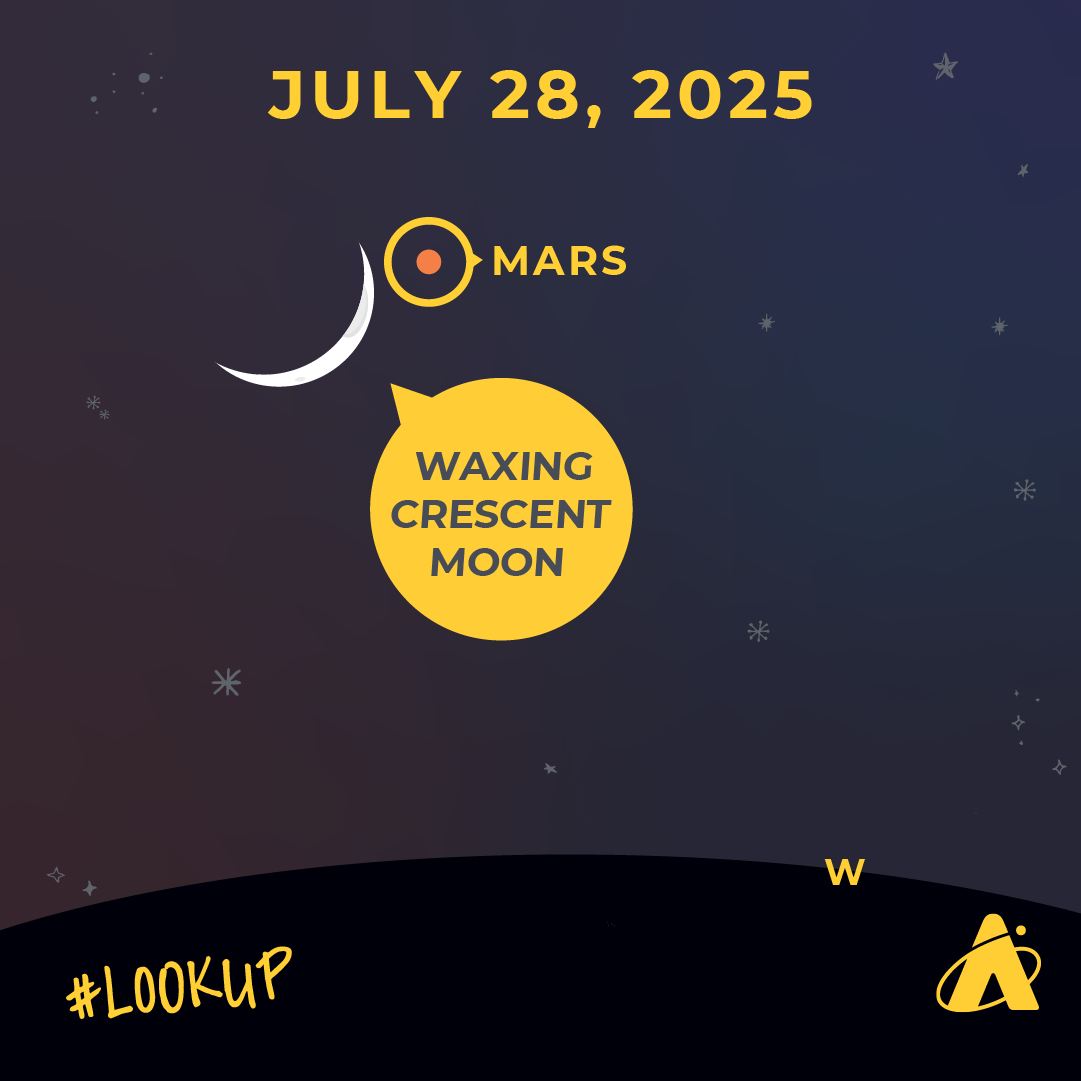
As the evenings pass, Mars keeps getting dimmer. By month’s end, Mars is only about 1.6 magnitude in brightness. It gets a little dimmer next month before it starts to re-brighten. The evening of July 28, Mars is near a slim, waxing crescent Moon, barely four days old. Mars sets in the west after 11:00 pm at the start of the month, and shortly after 10:00 pm by month’s end.
Late Night And Early Morning Planets
Spot Saturn In July
Long after the evening-twilight planets have set, Saturn rises in the east. On July 1, it rises around 12:30 am. By July 8, it rises just before midnight. By the end of the month, Saturn rises before 11:00 pm. It’s slightly brighter than first-magnitude all month long. Before the glare of sunrise begins to blot it out, Saturn will be roughly 40 degrees high above the south-southeastern horizon. The morning of July 16, a waning gibbous Moon appears just above Saturn.
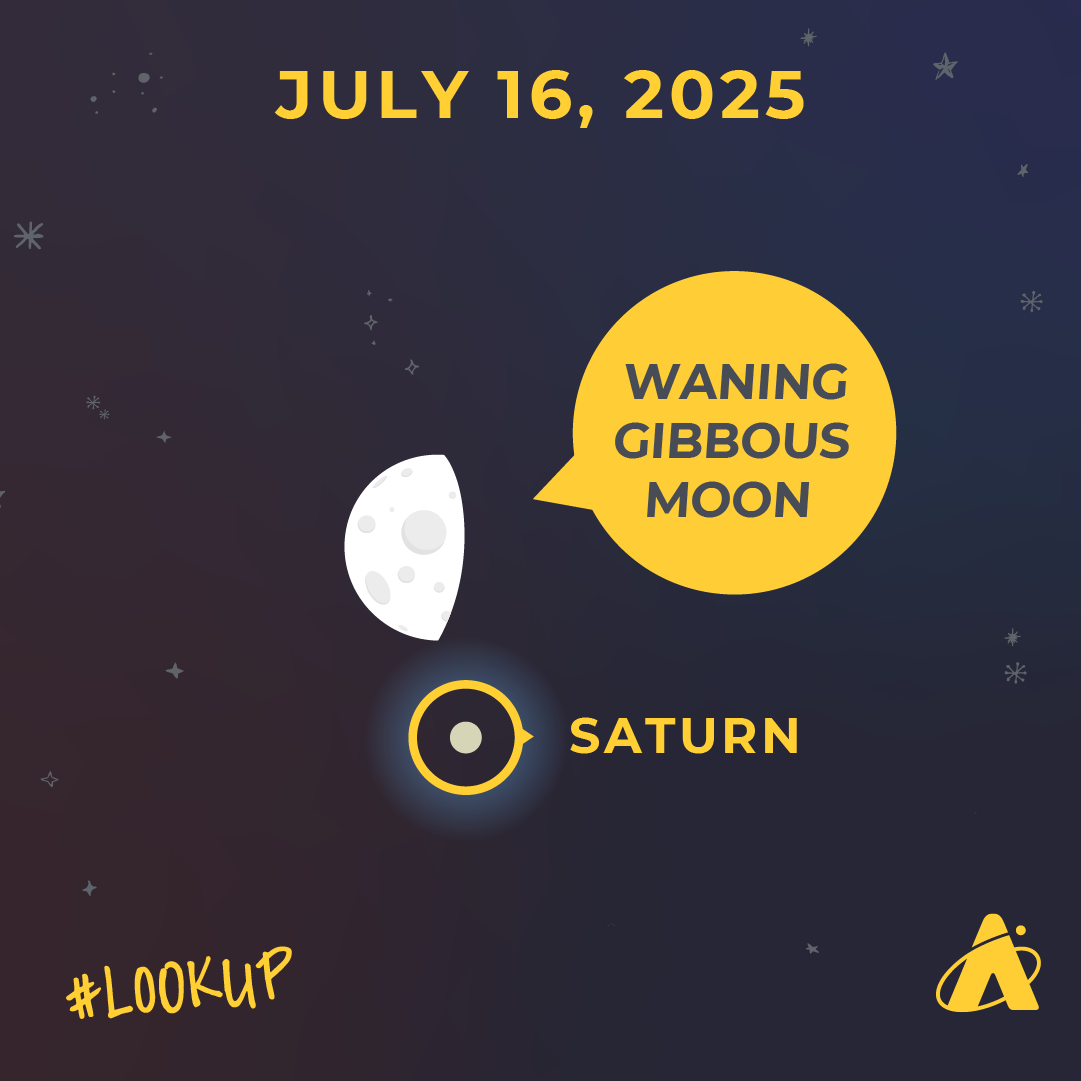
How To See Venus
The brightest planet, Venus, rises in the east-northeast around 3:00 am this month. It shines at about -4 magnitude and is easy to spot. The morning of July 22, Venus is about five degrees to the right of a slim, waning crescent Moon. You should be able to see Venus up to a half-hour before sunrise each morning this month, as it stays fairly close to the same place in the sky when viewed at the same time each day.
Where Is Jupiter?
The planet Jupiter is always bright, at nearly -2 magnitude. The trouble is that this month, it’s positioned close to the Sun in the sky before sunrise—meaning that the Sun’s glare will make the planet difficult to see. From July 1 through July 13, Jupiter appears less than ten degrees away from the edge of the Sun. But please, don’t try to look for Jupiter while any portion of the Sun’s disk is above the horizon! Looking at the Sun could result in permanent eye damage, which can happen before you even feel anything.
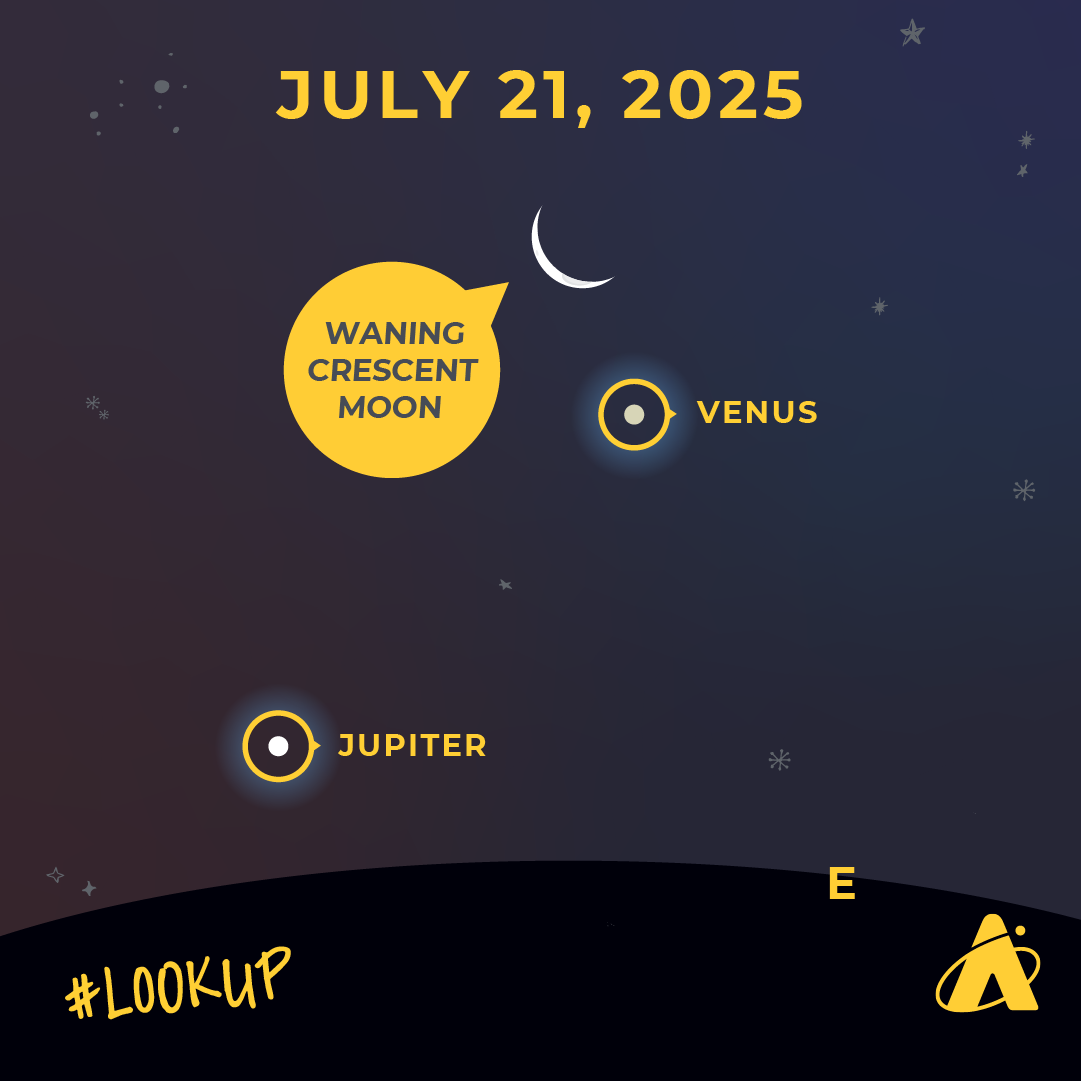
If you do try to look for Jupiter this month, you may want to wait until about 5:00 am on July 23, when the locations of a few other objects will help you find Jupiter easily and quickly. Venus is less than 20 degrees above and to the right of Jupiter with an extremely thin waning crescent Moon is about five degrees to the left of Jupiter. On the mornings after July 23, Jupiter will rise earlier and earlier before the Sun each day, making planet viewing easier and safer.
Moon Phases
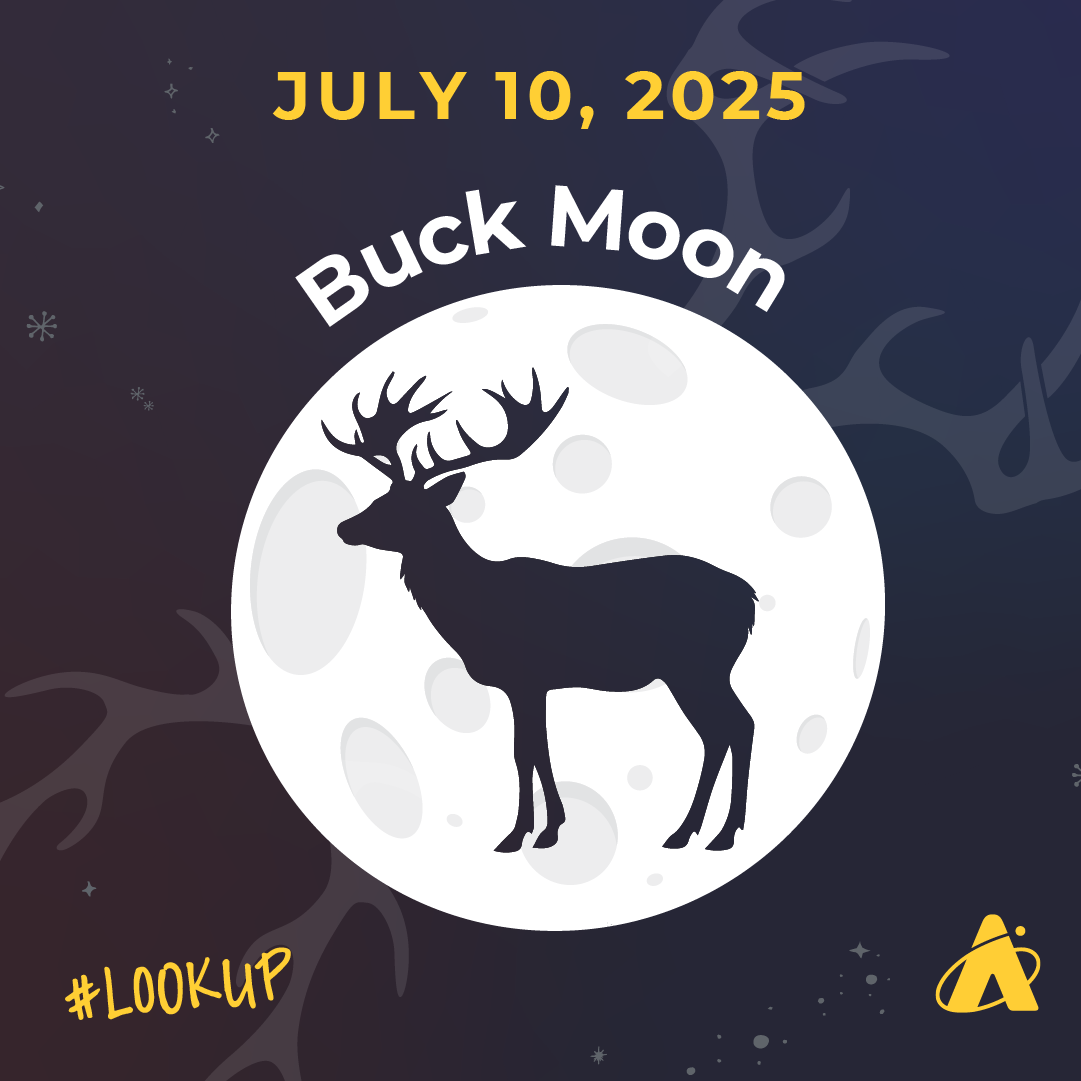
First Quarter Moon: July 2
Full Moon: July 10
Last Quarter Moon: July 17
New Moon: July 24
Please note: these descriptions are for the Chicago area, using Central time.
Subscribe To Skywatch Wednesday This July
Tour the sky with the Adler Planetarium’s Theaters Manager, Nick, in Skywatch Wednesday. Nick uses cutting edge visualizations, NASA images, and astrophotography to show you what you can see in the night sky throughout the year.
Check out Nick’s latest episode, learn how to see the summer triangle and the constellations that make it up. Plus, see zodiac constellations, Scorpius and Sagittarius, along with several Moon and planet conjunctions, the Perseid meteor shower, and even the Milky Way this summer!
Learn From Our Astronomy Educators
Watch recaps of Sky Observers Hangout livestreams this July! Learn how to observe upcoming cosmic happenings, enhance your astrophotography skills, and see celestial objects through a telescope virtually with our astronomy educators.
In the latest episode, Michelle and Hunter are joined by astrophotography expert, Nick Lake, and share everything you need to know about taking pictures of the night sky. They also show you views of galaxies through the 24 inch telescope in the Doane Observatory!
Adler Planetarium Announces $1 Million Gift for STEAM Youth Engagement Programs from S&C Electric Company Fund
Header Image: Adler teens gathered in the Planetarium’s Other Worlds exhibition
Chicago’s Adler Planetarium is thrilled to announce ongoing support for its youth engagement programs with a $1 million gift from the S&C Electric Company Fund. An electric grid innovator and long-time resident of the Rogers Park neighborhood, S&C has played a pivotal role in the Adler’s youth engagement programs, serving as a steadfast ally in fostering youth involvement in science, technology, engineering, art and math (STEAM) disciplines since its inaugural contribution in 2009.
“The Adler and S&C share a very important goal: to make science accessible and inclusive for Chicago’s youth” said the Adler’s interim President and CEO, Audris Wong. “This gift will help us directly engage young people in exploring the universe, where they’ll make discoveries and solve problems together.”
S&C’s support has enabled the expansion of the Adler’s youth engagement initiatives from a solitary student cohort with a single school partner to a major presence within Chicago’s STEAM youth engagement landscape. Through immersive hands-on experiences in authentic research, engineering projects, leadership development, and career exposure, the Adler’s programs have empowered thousands of young minds across Chicago, nurturing their passion for STEAM and equipping them with essential skills for diverse and rewarding careers.
S&C’s contribution helps expand opportunities for the Adler’s STEAM youth engagement programs:
SUMMER INTERNSHIPS
The Adler’s summer internships place Chicago teens in professional roles across the museum, learning professional skills in communication and teamwork, as well as gaining experience in space visualization and computer science. Interns work as paid employees in placements with managers across the departments.
FAR HORIZONS TEENS
Far Horizons Teens is a semester-long program through which Chicago high school students carry out cutting-edge research into light pollution and its effects. Participants design and build specialized research equipment, launching these experiments via high-altitude balloons and sharing findings through conference presentations and journal articleswith experts worldwide. This research experience goes hand-in-hand with the cultivation of vital STEAM skills, including coding (in Python and C++), electronics, and physics. Adler teens serve in the roles of designer, researcher, engineer, and leader in each project, gaining
invaluable skills and authentic experience in tackling real-world problems.
YOUTH ORGANIZATION FOR LIGHTS OUT [YOLO]
In the Adler’s YOLO program, hands-on STEAM learning and environmental justice collide. Participants learn about light pollution—its impact on human health and its effects on our environment—and engage with their local communities, alderpeople, and other local decision-makers through science and advocacy.
“The S&C Electric Company Fund is deeply committed to providing Chicago’s youth with the access and educational opportunities needed to succeed in STEAM careers,” said Anders Sjoelin, S&C president and CEO. “In that spirit, we are proud to support the Adler Planetarium in inspiring future generations of STEAM leaders and illuminating the opportunities these disciplines offer, both in their classrooms and communities. The students we engage today will be essential in helping transform the electrical grid for a better and brighter tomorrow.”
To learn more about all of the STEAM youth engagement opportunities for teens at the Adler, visit: https://www.adlerplanetarium.org/learn/teens/teen-opportunities/
Need More Space In Your Inbox?
On a cosmic scale, there’s practically no distance between us. We’re all flying through space on the same little blue planet, and we’re all looking up at the same sky.
The Adler Planetarium is not only a building—it is anywhere people gather to spot a constellation, see themselves in the life story of a scientist, or sing a song about black holes. In classrooms and living rooms all over the world, we remind people that they are not so far away from us, from each other, or from the stars.
Sign up for our emails to get the latest breaking space news, Adler happenings, and event information directly from us!
You can also connect with us, with science and astronomy, with our universe—and with other people—exactly where you are! Follow the Adler Planetarium on Instagram, TikTok or YouTube!
Can You Hear Sound In Space?
Header Image: Child using phone in Mission Moon exhibit.
If you have been to a NASCAR event—like the street race coming to Chicago for their third year this July—you know just how loud it can get on the race track! According to Motor Racing Sports, NASCAR Races and NASCAR Engines can reach up to 130 Decibels. If your only experience with car racing is the movie Grease, other ear-piercing noises you may be more familiar with are a rock concert or even nearby fireworks.
Although the NASCAR race decibel level does reach a level that is described as painful, it doesn’t quite reach the eardrum rupture level of a jet take-off.
It’s hard to imagine that a sound so loud on Earth would be non-existent in space. That’s why in this blog we are breaking down the science of sound and explaining why if you plopped a NASCAR race in space you wouldn’t hear a thing.
The Science Of Sound
How does sound work? Sound is a form of energy, often called a sound wave. It’s called a wave, not because it grew up surfing in California, but because the energy of sound is caused by the vibration of matter allowing sound to be transmitted through waves.
In order for sound to be heard you need a source, a receiver, and a medium.
The Source Of Sound
When you speak out loud, your vocal cords vibrate causing tiny air particles to vibrate in your throat, creating a sound wave. A fast vibration will cause waves to be close together and will create a higher pitch, and a slower vibration creates a lower pitch or frequency.
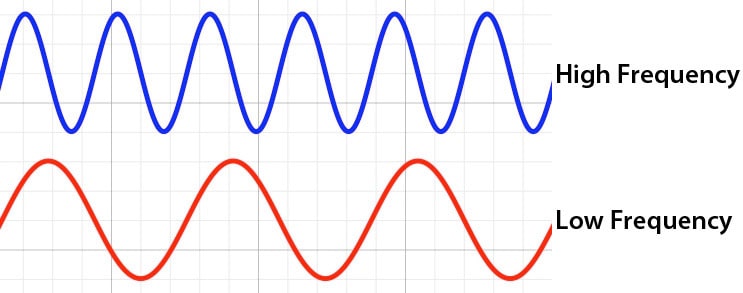
The Medium Of Sound
We aren’t talking about your connection to the spiritual world when we are talking about a medium for sound. A medium for sound is a substance such as a solid, liquid, or gas. Sound is transmitted through waves which travel through different substances or mediums.
We are most familiar with talking about sound traveling through air, as it is often referred to as the standard measure by scientists.
The Receiver Of Sound
You’ve heard the saying, “If a tree falls in a forest and no one is around to hear it, does it make a sound?” A receiver is a critical component to hearing sound. Although many units of measurements fall within human capacity, we can’t rely on just our own human sense of hearing.
As humans, we can only detect sound within a certain range, often between 20-20,000 hertz (Hz). A commonly-known frequency, to give you context to this range, is 440 Hz, the note that orchestras tune to. 440 Hz is also known as the note “A” or standard pitch.
If a sound is powerful enough, you may not even need to hear it. For example, an explosion can typically be heard, however, it can also be felt due to the huge vibrations.
We often talk about sound from a human capacity; species like your family’s dog can detect sounds in a different range of hertz that overlap with humans!
The Speed Of Sound
Before we move on, this blog is about NASCAR, so of course we need to talk about speed. The speed of sound is calculated by measuring the distance that sound travels over a given amount of time.
The best example we can give to understand the speed of sound is the delay that happens when we see a lightning bolt and hear thunder. The delay is caused by the difference in the speed of sound versus the speed of light.
If a meteor starts plummeting down to our little blue dot we call home, as it reaches our atmosphere, it would have a medium to move through, meaning that any sound it makes we would be able to hear.
Can You Hear Sound In Space?
Now that you have the background to the science behind sound, we can answer the initial question, “Can you hear sound in space?” In short, no, you cannot hear any sounds in empty space.
There is no sound in space because there is no air or water, meaning no medium for the sound to move through! With no air or water there is nothing to vibrate. Putting a NASCAR track in space (an unlikely experiment) would not even make a whisper of sound, despite the painfully loud volume on Earth. You wouldn’t even need ear protection to watch this NASCAR experiment in space…just a high-tech spacesuit.
Why? Because space is a vacuum, though not a perfect vacuum, and not the kind that you can buy at the store. That’s more or less to say that space is mostly empty, and vast. Vastly empty and filled with little to no particles to vibrate and create sound.
That’s why here on Earth, we can see stars because light is able to travel through a vacuum. But we cannot hear stars when looking up, because sound needs a medium, though we didn’t ask if they’ve tried calling on the phone. Maybe it would work better for a planet like Saturn because they would be able to see the rings—get it?
Deep Space Sounds
Okay, now let’s get even more scientific.
You may have heard (pun intended) research about the eerie sound of planets and stars, but they aren’t talking about sound in the same way as we do here on Earth. When you hear a scientist talking about listening to stars, they are often referring to electromagnetic radiation or data sonification.
What is data sonification? Data sonification for example takes elements of an image like brightness and position that are assigned pitches and volumes as a way to conceptualize known data in a new way. Gravitational waves are not sound, but are a different sense with which we can explore the cosmos in something other than light. This is a totally independent phenomena than light. Gravitational waves are often sonified because the frequencies of gravitational waves we can detect are similar to the human audible range (~10–2000 Hz), so the data can literally be directly converted into sound and listened to.
There are some instances in which astronomers do study sound waves in space. In empty space, there is no medium, so no sound. However, there are parts of space that are not empty. For example, sound waves can travel through stars, and these sound waves encode themselves in the light that we see from stars. This is a whole area of research called astroseismology.
Get More Space Facts
Need some space in your inbox? Sign up for our emails to get the latest breaking space news, Adler happenings, and be the first to hear about new and limited-seating events directly from us!
You can also connect with us, with science, with our universe—and with other people—exactly where you are! Follow the Adler Planetarium on Instagram, TikTok or YouTube!
Sky Observing 101: Where To Go Stargazing In Chicago
Header Image: A green tent on sand with silhouetted trees and a blue night sky with stars. Image Credit: Nick Lake 2020
Editor’s Note: This blog was originally published in June 2019 and was updated with more current information.
Interested in observing the night sky but not sure where to start? No worries! We’ve compiled a list of some of the best midwest stargazing and sky observing destinations in or near Chicago. We have even included a few additional quick reference and stargazing resources you can use as your guide to astronomy observing with the naked eyes or even a telescope.
Places To Observe In Chicago
1. The 606 Trail
The western entrance of the 606 Trail at 1801 N. Ridgeway, Chicago, IL is relatively clear of buildings, though not clear of light pollution. The 606 is a 2.7 mile elevated rail trail running east-west on the northwest side of Chicago and is open until 11:00 pm daily.
2. Forest Preserve District Of Cook County’s Palos Preserves
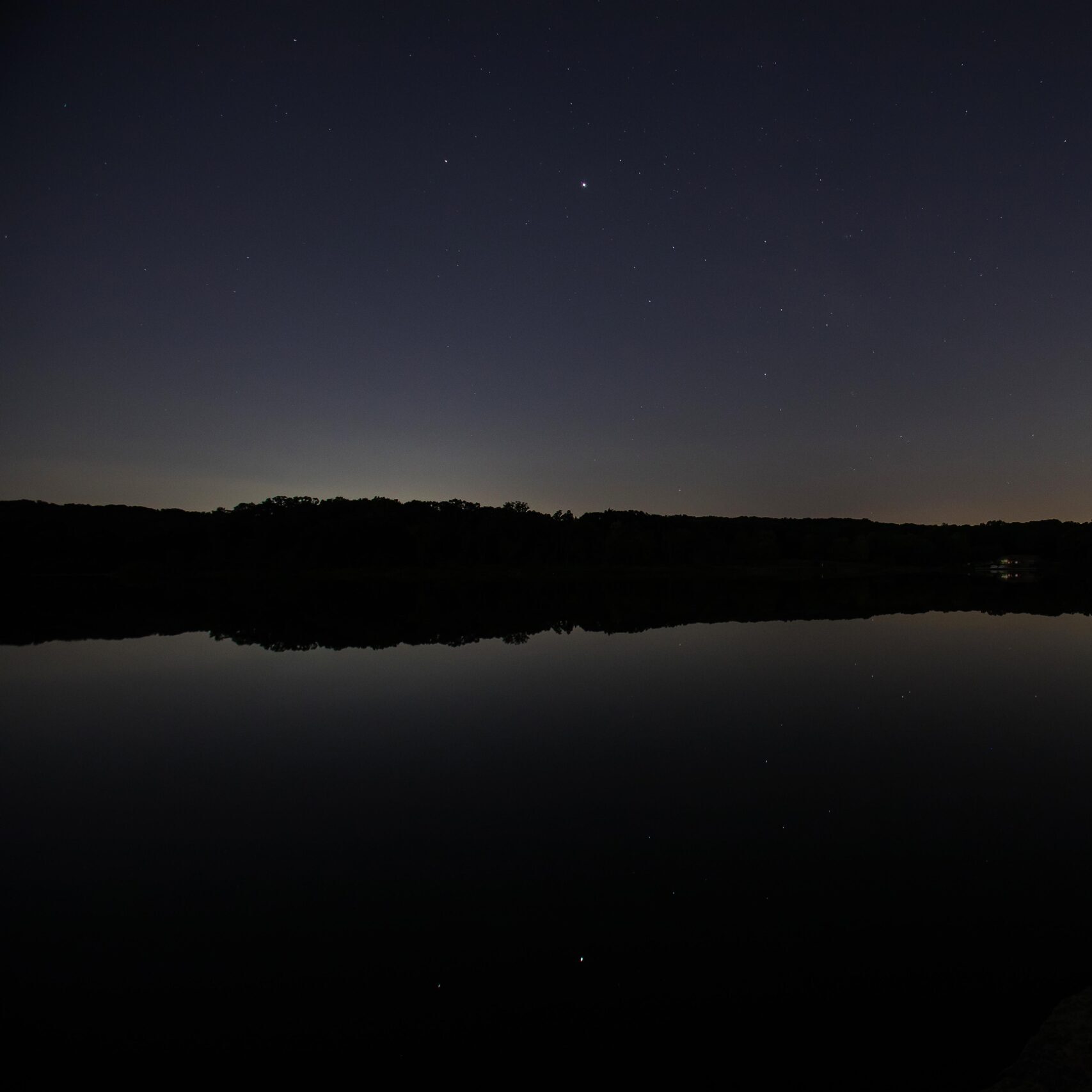
Did you know the largest Urban Night Sky Place in the world is in Illinois? Located in Willow Springs, IL, the Palos Preserves stretches 6,662 acres. This area emits far less light than downtown Chicago. The Forest Preserve works to actively preserve and protect the local nighttime environment.
The Adler Planetarium and Adler Teens from our Far Horizons Stratonauts program helped get Palo Preserves this historic designation! The Palos Preserves closes at sunset, however, the area is sometimes open for astronomy events.
The Forest Preserve District of Cook County also has several parks that offer overnight camping. Check the FPDCC website for available dates and overnight camping rates. Some locations are closed on certain days of the year or during certain months of the year. All other forest preserve locations generally close at sunset, but it is best to check with individual parks for closing times.
3. Chicago Lakefront
Locations along the shore of Lake Michigan looking east offer slightly darker skies. Recommended locations include:
- Loyola Beach
- Foster Beach
- Montrose Beach
- Rainbow Beach Park
- 12th Street Beach
- Margaret Burroughs Beach and Park
- Oakwood-41st Street Beach
- 57th Street Beach
- 63rd Street Beach
- South Shore Beach
- Calumet Park
4. The Doane Observatory At The Adler Planetarium
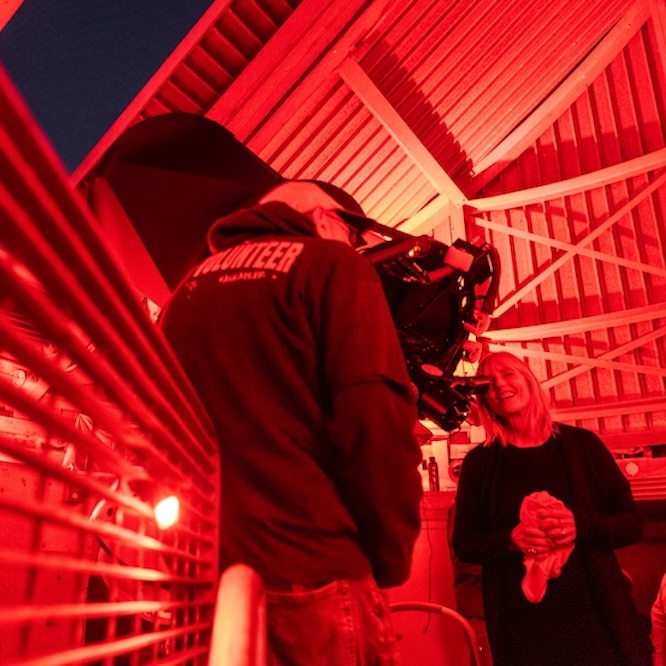
Located on the Museum Campus at 1300 S. DuSable Lake Shore Drive, Chicago, IL, the Doane Observatory can be found directly behind the Adler Planetarium and open for special events and during most Wednesdays for Adler at Night, depending on weather.
5. ‘Scopes In The City
‘Scopes in the City is an Adler program where astronomy educators and volunteers bring the museum—and the universe—a little closer to Chicagoland residents! Each of these free telescope observing events, hosted at local libraries, parks, and other locations, provides more opportunities for telescope observing at night and during the daytime.
All ’Scopes in the City events are free and weather permitting. You can get updates about upcoming sky observing opportunities by subscribing to our Adler Events email list or by joining the ‘Scopes with the Adler Facebook group.
Places to Observe In The Midwest
For people living in cities like Chicago, we are used to high levels of sky glow and often can’t see more than a handful of stars with the naked eye. That is why we wanted to include a few midwest destinations that can provide an even more magnificent stargazing experience.
1. Illinois State Parks
Illinois State Parks that are a relatively easy drive from Chicago include:
- Adeline Jay Geo-Karis Illinois Beach State Park
- Goose Lake Prairie State Natural Area
- Kankakee River State Park
- Starved Rock State Park
- Weinberg-King State Park
- Siloam Springs State Park
- Green River State Wildlife Area
Note: Those interested in visiting should check with individual parks to find out if campground sites are only available to those camping overnight.
2. Indiana Dunes State Park
Located less than 50 miles from downtown Chicago, the Indiana Dunes State Park is a great stop for anyone looking to escape the city to see the stars. We recommend checking the Indiana Dunes’ website for rules, regulations, hours, and fees.
3. Wisconsin State Parks
One of our favorite spots is the Richard Bong State Recreation area (open year-round until 11:00 pm). A vehicle admission sticker is required. Overnight camping (for a fee) is available.
4. IDA-Designated Dark Sky Park: Middle Fork River Forest Preserve
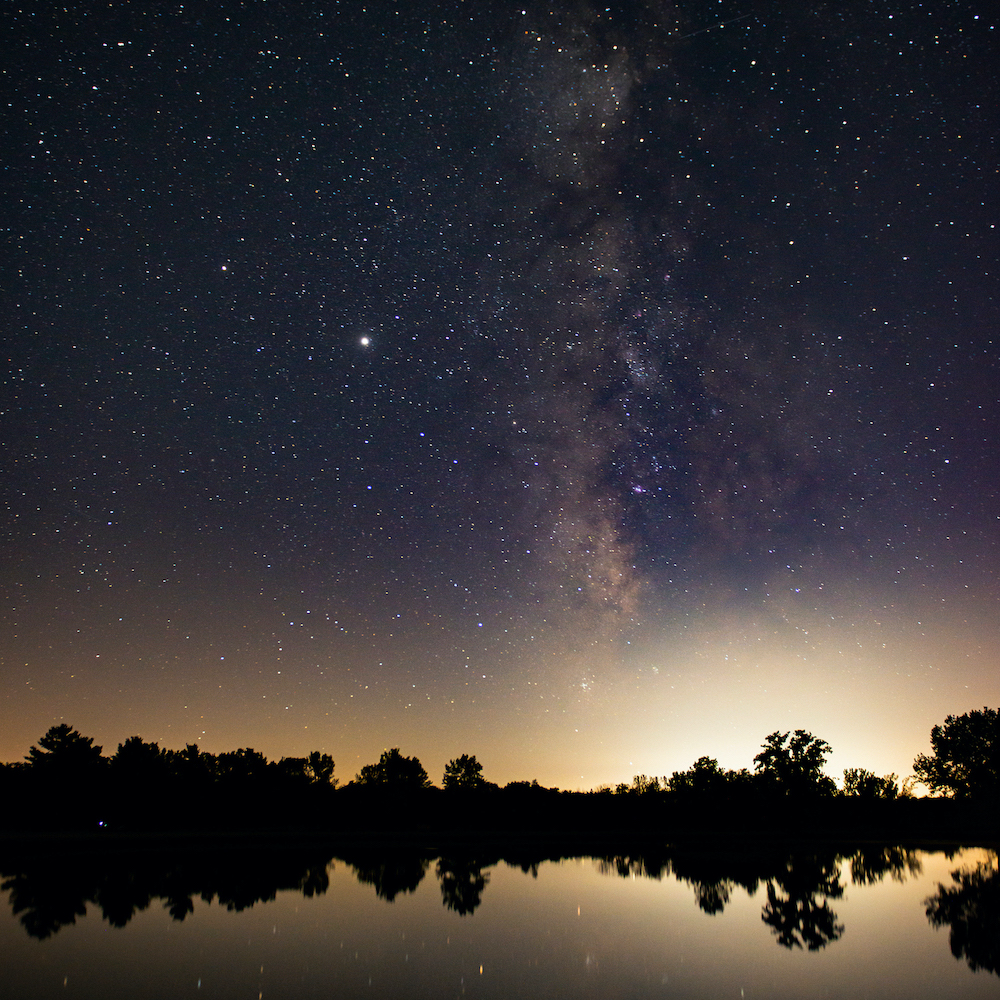
Did you know Illinois has an International Dark-Sky Association designated Dark Sky Park? Located about two hours south of Chicago, northeast of Champaign, IL, the Middle Fork River Forest Preserve is a great location to see a star-filled dark sky. The CCFPD has even more information about where to go, camping options, and more.
Astronomy Sky Observing Groups & Events
1. ‘Scopes At The Adler
Join our ‘Scopes At The Adler Facebook group for all potential upcoming telescope observing opportunities at the Planetarium.
2. Chicago Astronomer
The Chicago Park District conducts regular public observation sessions in parks throughout the city. Search “Chicago Astronomer” on the CPD site for upcoming events.
3. Naperville Astronomical Association
Naperville Astronomical Association hosts periodic free public events at their Astronomy Education Center in Naperville, IL, as well as daytime solar observing along the downtown Naperville Riverwalk.
4.The Calumet Astronomical Society
The Calumet Astronomical Society offers periodic free public events at the Thomas Conway Observatory in Lowell, Indiana, about an hour’s drive southeast of Chicago.
5. Lake County Astronomical Society
The Lake County Astronomical Society offers several observing events each year at public libraries in Lake (Illinois) and McHenry counties.
Astronomy & Stargazing Resources
-
Telescope Resources: Looking to find a telescope that’s right for you? Read Choosing A Telescope for helpful information to guide your search!
-
Chicagohenge Breakdown: Looking to catch the Chicagohenge phenomenon near each equinox? Read Understanding Chicagohenge to learn why this celestial alignment happens in Chicago and where you can see it.
-
Spotting ISS: Looking to spot the ISS traversing across the sky? Read How To Spot the International Space Station before you look up.
-
Observing Tips & Tricks: Looking to learn more about what you can see in our night sky? Read Sky Observing 101: What To See for information on eclipses, aurorae, the Moon, upcoming meteor showers, and more.
-
Stargazing Books: Looking for stargazing books to read? Read Stargazing Resources: A Few Good Books for a few recommendations.
Learn About Observing With Our Astronomy Educators
Before going on your next out-of-this-world night sky observing adventure, watch episodes of Sky Observers Hangout or Skywatch Wednesday to prepare! Learn how to observe upcoming cosmic happenings, enhance your astrophotography skills and see celestial objects through a telescope virtually with our astronomy educators.
Note: The information listed in this blog is subject to change without prior notice, so check with relevant local authorities regarding any required fees, overnight use, availability, etc. Practice safe sky observing at all times. Beware of any ground obstructions or other hazards in any location. Follow all national, state, and local laws, rules, and regulations. Stay off of private property unless you have the property owner’s expressed permission. The Adler Planetarium assumes no responsibility or liability for any injuries or damage sustained during any activities at any of these locations or events.
